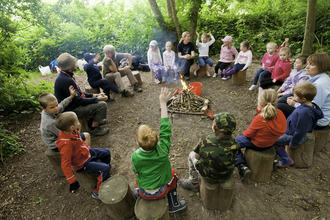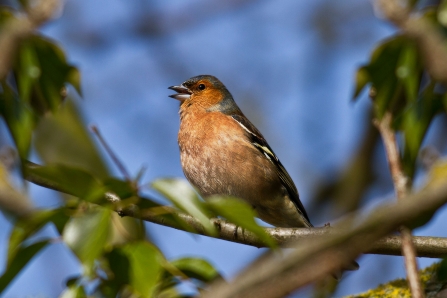

Chaffinches' singing
Different birds develop different habits during the breeding season. Yet one of the most common ways to attract a mate is by singing. Male chaffinches are especially good at that, starting their courtship in spring with a melodious song. Female chaffinches use the quality of the song to help them choose the 'fittest' male.
During the breeding season, the male chaffinch performs a courtship display, showing off his bright breeding plumage aimed at impressing the female.
Great crested grebe courtship display
There’s no secret love-making with great crested grebes, their beautiful display is for everyone to see! February is the start of their breeding season. At this time the birds develop dark brown ear tufts and bright chestnut ruffs which give them a comical appearance, but this courtship is serious.
One bird will shallow dive, only to surface immediately in front of its intended mate, and if all is going well the water ballet begins. Each bird stretches its neck and shakes out the chestnut ruff, raising it around the dark ear tufts. Sideways head-shakes, each bird mirroring its partner’s movements, may be followed by parallel swimming and more side to side head movements as though the birds are dancing a tango.
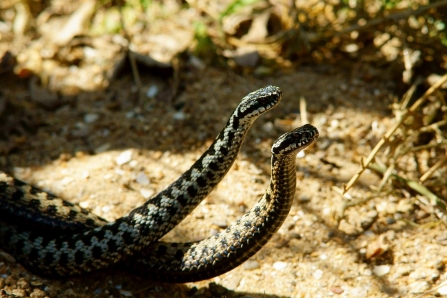
Adders dancing to win the female
In the mating season male adders take to the stage for a hypnotic display with their rivals to show off their dominance and supremacy to nearby females. The ‘dance of the adders’, performed by two or more males, occurs in April at the start of the breeding season. Entwining around each other, the male adders wrestle trying to gain height and dominance and knock each other down in a show of strength by pushing, twisting and rolling over until one of them can take no more.
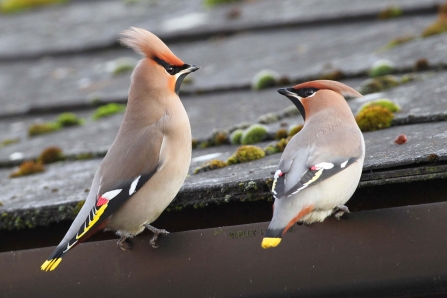
The courtship ritual of waxwings
Did you know the waxwing's crest is used principally for courtship? Making the most of this stunning feature for courtship, waxwings raise it almost to vertical as part of a wider display directed towards a potential mate. Waxwing pairs also perform an endearing courtship dance before mating where the male approaches the female and passes a berry, or other “gift”, to her which she then passes back, and he returns. They repeat this several times until the female consumes the gift.
Brown hares' boxing courtship behaviour
Hares are usually solitary creatures but in March/April you can see females fending off passionate mating urges from the males. This behaviour is thought to have given rise to the well-known expression "Mad as a March hare". If you’re lucky you can see females (called does or jills) standing on their hind legs and using their front to paws to literally box with the males (bucks). The bucks, however, are not the ones responsible for the famous boxing, it’s the does that initiate the behaviour, which is aimed to test the males' strength before deciding whether to proceed on the next step of courtship.
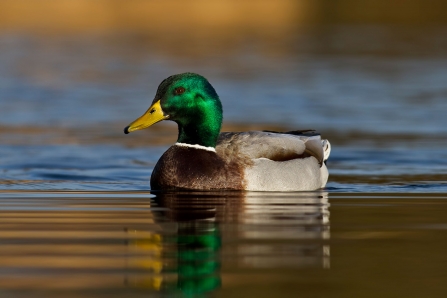
Mallard by Lakes4life
Mallard mating rituals
The glossy new plumage of drake (male) mallards, with their iridescent bottle green heads, white collars above purple-brown breasts and jaunty black curly upper tail feathers attracts the attention of ducks (the females). They pair up with lots of swimming side by side, tail-waggling and head-bobbing, and flicking water over each other.
Come to an event and learn more about wildlife!
Stay up-to-date with our work
Sign up below to receive the latest news from BBOWT, tips about how you can help wildlife, plus information on how you can get involved.




